#vegan buttermilk
Explore tagged Tumblr posts
Photo

Vegan Buttermilk Pancakes
#vegan buttermilk#vegan#buttermilk#pancakes#food#breakfast#dairy free#egg free#kids#dessert#recipe#whole wheat#thewillowskitchen
306 notes
·
View notes
Text

Best Ever Vegan Red Velvet Cake with Cream Cheese Frosting
#vegan#desserts#cake#red velvet#veganized#cacao#cocoa powder#beet powder#frosting#vegan cream cheese#vegan butter#coconut sugar#vegan buttermilk#sea salt
116 notes
·
View notes
Text
Had the silliest idea while making breakfast.. what if Damian’s Favorite Brother is Tim, but for the Dumbest Reason...pancakes
My idea is that Tim is Damian’s favorite brother, but not for the reasons one might expect. It’s not because of Tim’s skill, his smarts, or his ability to stay three steps ahead in every fight. Nope. Damian’s real reason for favoring Tim over Dick, Jason, or even Bruce is much simpler.
It’s because Tim makes the best pancakes. Like, legendary pancakes.
Not even kidding.
One morning, Tim casually whips up a batch of pancakes in the kitchen—y’know, because Alfred’s off running errands and the rest of the family doesn’t know the first thing about breakfast beyond opening a box of cereal, and Tim's been feeding himself since he was six. So Tim steps up to the stove, and bam—fluffy, golden stacks of heaven.
Damian, who never really cared for breakfast, takes one bite of Tim’s pancakes and is sold. From that moment on, he’s obsessed.
“Drake, you will make me those pancakes again tomorrow."
And Tim just blinks, completely confused, but shrugs it off like, “Uh, sure?”
The next morning, Damian’s right there in the kitchen, bright and early, waiting for his daily dose of pancake perfection. By the third day, he’s even dragging a chair next to Tim, watching like a hawk as Tim cooks, making sure he’s using the right ingredients.
Meanwhile, the rest of the Batfamily is just like, “Really? This is the thing that bonds them?”
Tim, being Tim, just rolls with it. He doesn’t ask questions. If Damian wants pancakes, Damian gets pancakes. He’s just trying to survive his new role as “Pancake Master.”
But Damian? Oh, he’s serious about this.
Damian tells anyone who will listen that Tim is the only one who knows how to make breakfast properly. He’ll give the other brothers side-eye anytime they dare to suggest they could cook for him. Even Alfred raises an eyebrow, but Damian’s already set: Tim’s pancakes or nothing.
What’s even funnier is that when Damian gets pissed off at anyone, he refuses to eat their cooking. But Tim? Untouchable. The one person who can screw up as many times as he wants and still be in Damian’s good graces—because those pancakes? Irreplaceable.
So, while the Batfamily argues over strategy, patrols, or who gets to drive the Batmobile, Damian's priorities are clear:
"You’re all amateurs. Drake’s the only one who makes pancakes worthy of the Wayne name.”
And now, Tim’s been promoted to Damian’s favorite brother for the silliest reason imaginable. But hey, if the key to Damian’s heart is pancakes, Tim’s got that title locked down.
#tim drake#damian wayne#batfam#tim drake and damian wayne#tim makes pancakes like no other#and becomes damians favorite brother in the process#the bats can't deny that tim's pancakes are delicious but like#really? that's what made him the favorite brother?#tim learned to make pancakes from janet who was always an incredible cook#tim has a different kind of pancake batter mix for each of the bats#bruce is traditional with buttermilk pancakes#jason likes banana nut#dick prefers blueberry pancakes#tim makes himself chocolate chip pancakes#damian loves all of tims combinations but his favorite is undoubtedly vegan matcha pancakes#i was making banana pancakes when i though of this can you tell
1K notes
·
View notes
Text

Vegan Buttermilk Pancakes
#vegan food#vegan#buttermilk#pancakes#almond milk#breakfast#recipe#food#delicious#food blog#recipes#yummy food
66 notes
·
View notes
Text
someone bought 'willow original spread' instead of butter fml
#doesnt even taste that bad its just offputtingly yellow#also 'suitable for vegetarians' um yes. obviously. so is butter. its not even vegan because it has buttermilk in it. so why
2 notes
·
View notes
Text

Vegan Maple Cheddar Buttermilk Biscuits
#savoury#savoury biscuits#recipe#recipes#vegan#veganism#vegetarian#plant based#makeitdairyfree#maple#cheddar#cheese#buttermilk#thanksgiving#food#foodporn#food porn#sides#maple syrup
7 notes
·
View notes
Text
Você Sabe quais são Os pratos mais Difíceis do mundo?
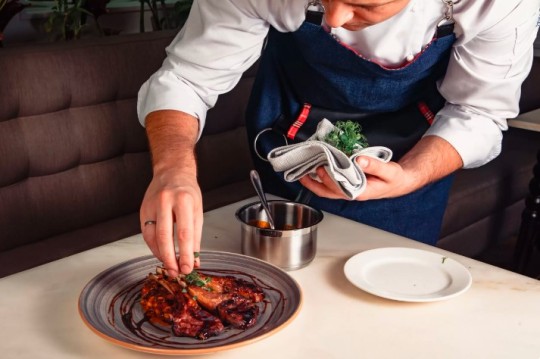
Conheça os pratos mais difíceis de serem elaborados: A culinária é uma forma de arte que requer paciência, habilidade e prática. Existem muitos pratos que são considerados difíceis de preparar, devido à complexidade da receita, à técnica exigida ou à raridade dos ingredientes.
#vegan#food#recipe#banana#what vegans eat#vegetarian#gluten free#cheese curds#appetizer#fried cheese#ranch#buttermilk ranch#steak#meat#beef#churrasco#chimichurri#main course#meal#beef steak#dinner#garlic#parsley#tasty#foodporn#delicious#cooking#food photography#foodgasm#steak recipes
2 notes
·
View notes
Text

heres the update. nothing else since then, so we'll probably never know if he actually divorced her ass.
i dont think it's unreasonable to think one or both of the children are still completely no contact with their step family and it's not unreasonable to assume the older child (the male) likely cut his step mother from his life, too. I sincerely hope they did.
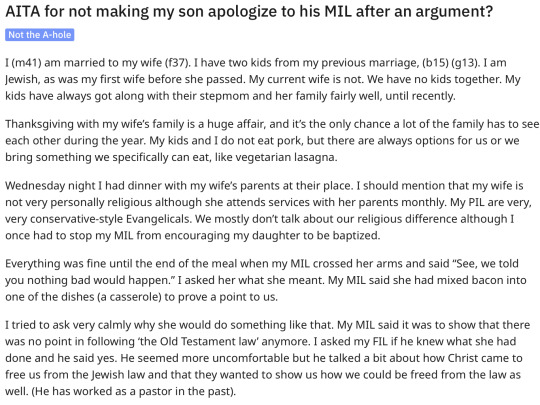
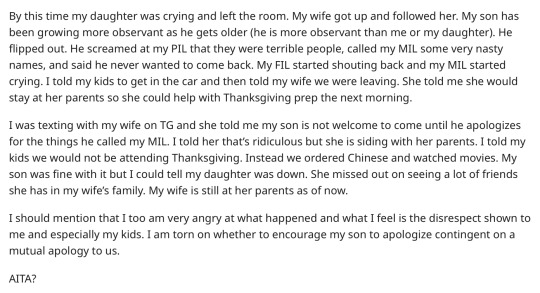
The Goyim are fucking wild, the way I would have dumped that casserole over that woman's head, also divorce that wife.
#the same thing has happened to me.#went ot a kids birthday party. the hostess (sister in law) assured me multiple times that it was vegan and gluten free bc her sister#and her nephew are allergic to eggs and are celiac#i said ok ig i'll try one#half way through my stomach starts hurting like you wouldnt believe. it took me 20 minutes just to eat that much bc it made me so sick#i overheard her tell another guest 'yeah it's made with buttermilk instead of eggs!'#i was sick for the next two weeks; even despite me making myself throw up half the cupcake in the bathroom immediately.#my intestines were damaged for the next year afterwards.#i cut her out of my life immediately. whenever i would see her at a family event and she would offer me food i would very sternly refuse it#and outright throw it away right in front of her#people who put shit in your food as a gotcha bc they dont agree with your allergies; choices; morals; religion are actual scum.#she constantly judged me for being vegan too. is a nurse and a boy mom to really help you get a picture of her character.#so i know for a fact it really was intentional. bc she KNOWS what vegan is and she intentionally chose her words to make it seem like ti wa#vegan when she KNEW it wasnt. she even outright told me it WAS vegan#so yeah#i really truly hope those kids and that guy cut that piece of shit woman out of their lives.#bc of that one event im terrified to eat food ive cooked most times bc im always wondering whats in it that i cant see#again. even in food I COOKED MYSELF FROM SCRATCH.#being fed something unknowingly IS traumatic. and again; i truly hope no one forgave her or her family.
51K notes
·
View notes
Text
Pear Upside Down Cake - Vegan
Searching for a vegan dessert that not only tastes heavenly but also looks stunning on the table? Look no further than this Vegan Buttermilk Pear Upside Down Cake. Rich in flavor, light in texture, and 100% plant-based, this dessert will become your new go-to recipe for special occasions. Vegan Pear Buttermilk Upside Down Cake “Mom – Can you make that cake you used to make?” – That was all that…
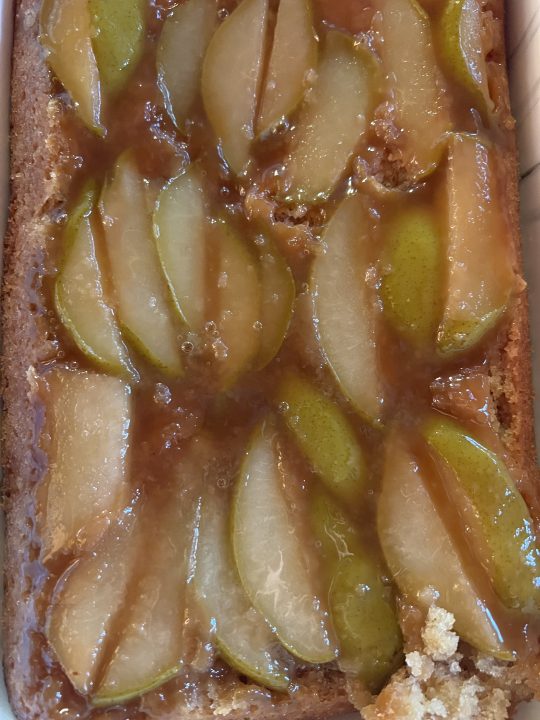
View On WordPress
1 note
·
View note
Link
0 notes
Text
Easy Vegan Buttermilk (Only 2 Ingredients!)
how to make vegan buttermilk (only 2 ingredients) #veganhacks #veganbaking #buttermilk #soymilk
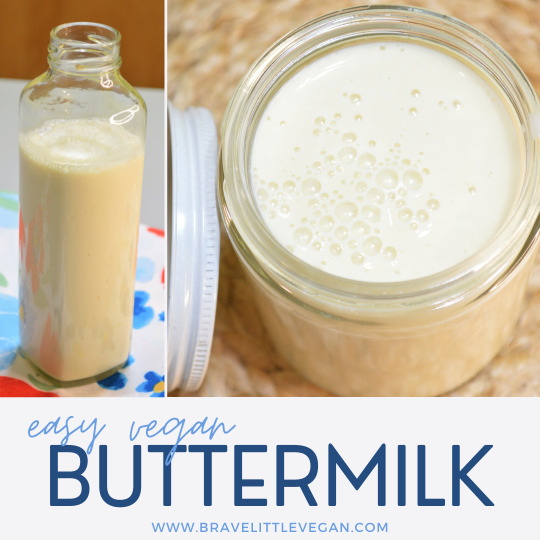
View On WordPress
#10 ingredients or less#5 ingredients or less#baking#buttermilk#buttermilk recipe#buttermilk substitute#buttermilk using soy milk#condiment#dairy alternatives#dairy-free#dairy-free buttermilk#dairy-free milk#easy vegan baking#easy vegan cooking#food substitutes#how to make buttermilk#how to make vegan buttermilk#ingredients#milk-free#non-dairy#non-dairy milk#plant-based#soy milk#vegan#vegan baking#vegan baking recipes#vegan buttermilk#vegan buttermilk recipe#vegan cooking#vegan tips and tricks
0 notes
Text

V/GF Carrot Cake Recipe with Cream Cheese Frosting
#vegan#gluten free#carrot cake#cream cheese#frosting#cake#layer#birthday#spring#easter#autumn#spice#cinnamon#carrot#baking#recipe#dairy free#egg free#tapioca free#ginger#nutmeg#esater#brown sugar#yogurt#buttermilk#thebananadiaries
162 notes
·
View notes
Text
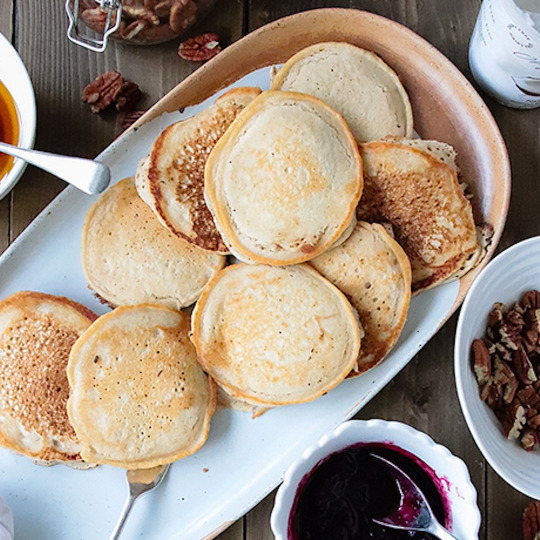
Ultimate American 'Buttermilk' Pancakes (Vegan)
#vegan#breakfast#brunch#american cuisine#pancakes#veganized#buttermilk pancakes#plant milk#lemon#vanilla#cinnamon#coconut sugar#sea salt#pecans#blueberries#maple syrup
71 notes
·
View notes
Text
Recipes below 300 kcal (Youtube edition)
Was lurking on youtube and thought why not make a list of low cal recipe that i found, and here it is!!
129 kcal ice cream
124 kcal creamy vegetable soup
190 kcal flourless chocolate brownies
265 kcal lasagna ( 1 / 2 )
175 kcal buttermilk chicken
157 kcal keto chicken dumpling
98 kcal everything bagel
189 kcal chicken soup
172 kcal warabi mochi (without topping and syrup)
low calorie bubble tea (two types of drinks, the pearl is 0 kcal)
136 kcal (per slice) cheesecake
107 kcal spring roll, 126 kcal carrot snack, 157 kcal chicken kelaguen
271 kcal mushroom soup
292 kcal vegan veggie burger
267 kcal vegetarian one pot spaghetti, 375 kcal taco quinoa, 238 kcal one pot pizza pasta
110 kcal sweet potato soup, 193 kcal minestrone soup, 201 kcal coconut chicken curry soup
126 kcal roasted cauliflower soup, 254 kcal sweet potato soup, 145 kcal beet soup
33 kcal pepperoni pizza bite
136 kcal cheesecake
36 kcal chicken meatball
261 kcal apple fritter
134 kcal mac and cheese (there’s three version of mac and cheese in the vid)
253 kcal honey garlic cauliflower
45 - 150 kcal pizza (6 varieties of pizza)
222 kcal air fryer cauliflower wings
You can always find substitutes for the ingredients to lower the calorie count.
If you made any of the recipe, feel free to share it with us ❤
Stay safe lovelies ❤✨
2K notes
·
View notes
Text
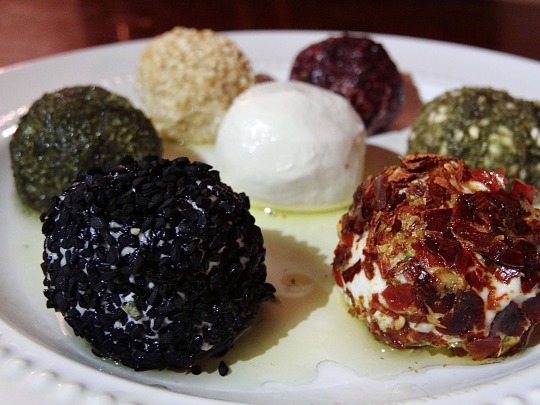
[ID: Seven yoghurt balls on a plate drizzled with olive oil. The one in the center is plain; the others are covered in mint, toasted sesame seeds, ground sumac, za'tar, crushed red chili pepper, and nigella seeds. End ID]
لبنة نباتية / Labna nabatia (Vegan labna)
Labna (with diacritics: "لَبْنَة"; in Levantine pronunciation sometimes "لَبَنَة" "labanay") is a Levantine cow's, sheep's, or goat's milk yoghurt that has been strained to remove the whey and leave the curd, giving it a taste and texture in between those of a thick, tart sour cream and a soft cheese. The removal of whey, in addition to increasing the yoghurt's tanginess and pungency, makes it easier to preserve: it will keep in burlap or cheesecloth for some time without refrigeration, and may be preserved for even longer by rolling it into balls and submerging the balls in olive oil. Labna stored in this way is called "لبنة كُرَات" ("labna kurāt") or "لبنة طابات" ("labna ṭābāt"), "labna balls." Labna may be spread on a plate, topped with olive oil and herbs, and eaten as a dip for breakfast or an appetizer; or spread on kmaj bread alongside herbs, olives, and dates to make sandwiches.
The word "labna" comes from the Arabic root ل ب ن (l b n), which derives from a Proto-West-Semitic term meaning "white," and produces words relating to milk, yoghurt, nursing, and chewing. The related term "لَبَن" ("laban"; also transliterated "leban") refers to milk in Standard Arabic, but in Levantine Arabic is more likely to refer to yoghurt; a speaker may specify "لَبَن رَائِب" (laban rā'ib), "curdled milk," to avoid confusion.
Labna is a much-beloved food in Palestine, with some people asserting that no Palestinian home is without a jar. Making labna tabat is, for many, a necessary preparation for the winter season. However, by the mid-2010s, the continuation of Israel's blockade of the Gaza strip, as well as Israeli military violence, had severely weakened Gaza's dairy industry to the point where almost no labna was being produced. Most of the 11 dairy processors active in Gaza in 2017 (down from 15 in 2016) only produced white cheese—though Mustafa Eid's company Khalij had recently expanded production to other forms of dairy that could be made locally with limited equipment, such as labna, yoghurt, and buttermilk.
Dairy farmers and processors pushed for this kind of innovation and self-sufficiency against deep economic disadvantage. With large swathes of Gaza's arable land rendered unusable by Israeli border policing and land mines, about 90% of farmers were forced by scarce pasture land and low fodder production to feed their herds with increasingly expensive fodder imported from Israel—dairy farmers surveyed in 2017 spent an estimated 87% of their income on fodder, which had doubled in price since 2007. Cattle were thus fed with low quantities of, or low-quality, fodder, resulting in lower milk production and lower-quality milk.
Most dairy processors were also unable to access or afford the equipment necessary to maintain, upgrade, or diversify their factories. Since 2007, Israel has tightly restricted entry into Gaza of items which they consider to have a "dual use": i.e., a potential civilian and military function. This includes medical equipment, construction materials, and agricultural equipment and machinery, and impacts everything from laboratory equipment to ensure safe food supplies to packaging and labelling equipment. Of the dairy products that Gazan farmers and processors do manage to produce, Israel's control over their export can cause huge financial losses—as when Israel prohibited the export of Palestinian dairy and meat to East Jerusalem without warning in March of 2020, costing estimated annual losses of 300 million USD.
In addition to this kind of economic manipulation, direct military violence threatens Gaza's dairy industry. Mamoun Dalloul says that his factory was accused of holding rockets and subsequently bombed in 2008, 2010, 2012, and again in 2014, resulting in repeated moves and the loss of the capability to produce yellow cheese. The Israeli military partially or totally destroyed 10 dairy processing factories, and killed almost 2,000 cows, during its 2014 invasion of Gaza, resulting in an estimated 43 million USD of damage to the dairy sector alone. Damage to cow-breeding farms in 2014 reduced the number of dairy cows to 2,600, just over half their previous number. Damage to, or destruction of, wells, water reservoirs, water tanks, and the Gaza Power Plant's fuel tank exacerbated pre-existing problems with producing cattle feed and with the transportation, processing, and refrigeration of dairy products, leading to spoiled milk that had to be disposed of. Repeated offensives made dairy processors reluctant to re-invest in equipment that could be destroyed at any time.
Israeli industry profits by making Gazan self-sufficiency untenable. Israeli goods entering Palestine are not subject to import taxes, and Israeli dairy companies are not dealing with the contaminated water, limited electricity, high costs of feed, out-of-date and expensive-to-repair equipment, and scarce land (some companies, such as Tnuva, purchase milk from farms on illegal settlements in the West Bank) with which Gazan producers must contend. The result is that the local market in Gaza is flooded with imports that are cheaper, more diverse, and of higher quality than anything that local producers can offer. Many consumers believe that Israeli products are safer to eat.
Nevertheless, Gazans continue building and rebuilding. Despite significant decreases in ice cream factories' production after the imposition of Israel's blockade in 2007, Abu Mohammad noted in 2015 that locally produced ice cream was cheaper and more varied than Israeli imports. In 2017, the amount of dairy sold in 74 shops in Gaza that was sourced locally, rather than from Israel, had increased from 10% to 60%. Ayadi Tayyiba, the region's first factory with an all-woman staff, opened in 2022; it produced cheese, yoghurt, and labna with sheep's milk from affiliated farms. However, demand for sheep's milk products has decreased in Gaza due to its higher production costs, leading the factory to supplement its supply with purchased cow's milk.
The current Israeli genocidal offensive on Gaza has caused damage of the same kind as—though to a greater extent than—previous shellings and invasions. Lack of ability to sell milk that had already been produced to factories, as well as lack of access to electricity, caused an estimated 35,000 liters of milk to spoil daily in October of 2023.
Support Palestinian resistance by calling Elbit System’s (Israel’s primary weapons manufacturer) landlord, donating to Palestine Legal's activist defense fund, and donating to Palestine Action’s bail fund.
Equipment:
A blender
A kettle or pot, to boil water
A cheesecloth or tea towel
Ingredients:
1 cup (130g) cashews (soaked, if your blender is not high-speed)
3/4 cup filtered or distilled water, boiled
1-3 vegetarian probiotic capsules (containing at least 10 billion cultures total)
A few pinches sea salt
More water, to boil
Arabic-language recipes for vegan labna use bulghur, almonds, or cashews as their base. This recipe uses cashew to achieve a smooth, creamy, non-crumbly texture, and a mild taste like that of cow's milk labna. You might try replacing half the cashews with blanched almonds for a flavor more similar to that of sheep's or goat's cheese.
Make sure your probiotic capsules contain no prebiotics, as they can interfere with the culture. The probiotic may be multi-strain, but should contain some of: Lactobacillus casei, Lactobacillus rhamnosus, Bifidobacterium bifidus, Lactobacillus acidophilus. The number of capsules you need will depend on how many cultures each capsule is guaranteed to contain.
Instead of probiotic capsules, you can use a speciality starter culture pack intended for use in culturing vegan dairy, many of which are available online. Note that starter cultures may be packaged with small amounts of powdered milk for the bacteria to feed on, and may not be truly vegan.
If you want a mustier, goat-ier taste to your labna, try replacing the water with rejuvelac made with wheat berries.
You can also start a culture by using any other product with active cultures, such as a spoonful of vegan cultured yoghurt. If you have a lot of cultured yoghurt, you can just skip to straining that directly (step 5) to make your labna—though you won't be able to control how tangy the labna is that way.
Instructions:
This recipe works by blending together cashews and water into a smooth, creamy spread, then culturing it into yoghurt, and then straining it (the way yoghurt is strained to make labna). It's possible that you could skip the straining step by adding more cashews, or less water, to the yoghurt to obtain a thicker texture, but I have not tested the recipe this way.
1. If your blender is not high-speed, you will need to soak your cashews to soften them. Soak in filtered or distilled water for 2-4 hours at room temperature, or overnight in the fridge. Rinse them off with just-boiled water.
2. Boil several cups of water and use the just-boiled water to rinse your blender, tamper, measuring cups, the bowl you will ferment your yoghurt in, and a wooden spoon or rubber spatula to stir. Your bowl and stirring implement should be in a non-reactive material such as wood, clay, glass, or silicone.
3. Make the yoghurt. Blend cashews with 3/4 cup just-boiled water for a couple of minutes until very smooth. Transfer to your bowl and allow to cool to about skin temperature (it should feel slightly warm if dabbed on the inside of your wrist). If the mixture is too hot, it may kill the bacteria.
4. Culture the yoghurt. Open the probiotic capsules and stir the powder into the cashew paste. Cover the bowl with a cheesecloth or tea towel. Ferment for 24 hours: on the countertop in summer, or in an oven with the light on in winter.
Taste the yoghurt with a clean implement (avoid double-dipping!). Continue fermenting for another 12-24 hours, depending on how tangy you want your labna to be. A skin forming on top of the yoghurt is no problem and can be mixed back in. Discard any yoghurt that grows mold of any kind.
5. Strain the yoghurt to make labna. Place a mesh strainer in a bowl, making sure there's enough room beneath the strainer for liquid to collect at the bottom of the bowl; line the strainer with cheesecloth or a tea towel, and scoop the cultured yoghurt in. Sprinkle salt over top of the yoghurt. Fold the towel or cheesecloth back over the yoghurt, and add a small weight, such as a ceramic plate or a can of beans, on top.
You can also tie the cheesecloth into a bag around a wooden spoon and place the wooden spoon across the rim of a pitcher or other tall container to collect the whey. The draining may occur less quickly without the weight, though.
Strain in the refrigerator for 24-48 hours, depending on the desired texture. I ended up draining about 2 Tbsp of whey.
6. If not making labna balls: Put in an airtight jar, and add just enough olive oil to cover the surface of the labna. Store in the fridge for up to two months.
7. To form balls (optional): Oil your hands to form the labna into small balls and place them on a baking sheet lined with parchment paper. They may still be quite soft.
Optionally sprinkle with, or roll in, dried mint, za'tar, sesame seeds, nigella seeds (القزحة), ground sumac, or crushed red chili pepper, as desired.
Optionally, for firmer balls, lightly cover with another layer of parchment paper and then a kitchen towel, and leave in the refrigerator to dry for about a day.
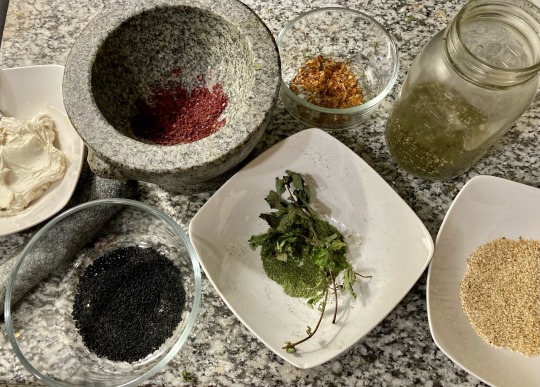
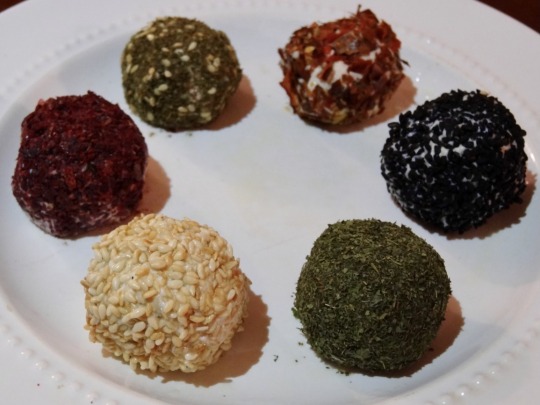
Place labna balls in a clean glass jar and add olive oil to cover. Retrieve labna from the jar with a clean implement. They will last in the fridge for about a year.
550 notes
·
View notes
Text
Vegan Blueberry & Lemon Muffins!

I used a great recipe on the BBC Foods website!
INGREDIENTS
200ml/7fl oz oat milk
1 tsp apple cider vinegar
300g/10½oz plain flour
½ tsp salt
150g/5½oz caster sugar
1¼ tsp bicarbonate of soda
2 tsp baking powder
3 tbsp poppy seeds
2 lemons, juice and zest
2½ tbsp olive oil, plus extra for greasing
175g/6oz frozen blueberries
For the lemon drizzle icing
120g/4¼oz icing sugar
2 tbsp oat milk
4 tbsp fresh lemon juice
lemon zest, to garnish
METHOD
1. Preheat the oven to 200C/180C Fan/Gas 6 and grease a 10–12-hole muffin tin.
2. Mix the oat milk and vinegar together and leave for about 5 minutes to create a buttermilk-like consistency.
3. Sift all the dry ingredients together in a large bowl. Pour the remaining wet ingredients into the milk and vinegar and whisk together. Fold the wet ingredients into the dry, making sure no pockets of flour have been left.
4. Add half the frozen blueberries, if using, to the mixed batter and turn gently (you just want to fold them in to prevent the colours mixing). Divide the mixture evenly between the muffin tin holes and top each one with a few of the remaining frozen berries and push into the surface. Bake for 25–30 minutes until a skewer inserted into the centres comes out clean. Remove from the tin and allow to cool completely if you want to add the icing.
5. To make the icing, mix the icing sugar with the oat milk and lemon juice in a bowl until runny enough to drizzle over the top of each muffin (simply add 1 teaspoon more of icing sugar at a time if it’s too runny). Sprinkle fresh lemon zest over the top of each muffin to decorate.
42 notes
·
View notes